Virginia is home to some of the best fossil collecting sites in the United States. Millions of years ago, Virginia was covered in a shallow sea that was teeming with life, leaving behind prolific fossil beds. Today, you can find the remains of those ancient life forms in locations all across the state, particularly in state parks along the coast.
You can find fossils in Virginia at fossil collecting sites like Westmoreland, Chippokes Plantation, and York River State Parks. In general, fossils are found in formations as old as the Cambrian, and most famously include shark teeth, megalodon teeth, and abundant Chesapecten jeffersonius specimens.
Fossil collecting in Virginia can be a fun and rewarding experience, but it helps to know exactly where to look and what to look for. I’ll go into exactly where to go and give you a rundown of the types of fossils you can find.
Where to Find Fossils in Virginia
NOTE: This map shows public fossil collecting sites (in red) where collecting is usually permitted, but conditions may change. Blue markers indicate general areas by county and describe what types of fossils you may be able to find there if you have permission to collect. Always get permission to collect on any piece of property.
TIP: The county locations shown on the map are derived from the fantastic resources at fossilspot.com and from Don Kenney. There, you can find more detailed information on potential fossil sites.
Virginia is one of the best states in the country for fossil hunting and has long been a favorite destination for collectors, students, and enthusiasts. While you can find a wide variety of fossils in locations all across the state, the best collecting sites tend to be congregated near the beaches in the eastern part of the state, particularly in state parks where public access is allowed.
One of the reasons Virginia is such a prolific state for fossils is the large amount of sedimentary rock exposed on the surface. There are, of course, areas where igneous or metamorphic rocks are more dominant, but large swaths of the state’s surface are made of sedimentary rocks that contain or are even largely made up of fossils.
Virginia’s fossil record is extensive, with fossils ranging in age from the Cambrian (~500 million years ago) to the relatively recent Neogene (~3 million years ago). This gives scientists a great opportunity to analyze the evolution of many different types of fossils. Of particular interest in Virginia’s state fossil, Chesapecten jeffersonius, which is abundant throughout millions of years worth of stratigraphy.
There is almost no limit to the types and species of fossils you can find trapped in Virginia’s bedrock. I’ll dive deeper into exactly what you can find later in this article, but for now just know that you can commonly find many different types of trilobites, cephalopods, brachiopods, coral, graptolites, plants, and even vertebrate fossils like bony fish and shark teeth.
Tip: Check out my recommended gear page to make sure you have everything you need for a great day in the field.
Almost any exposure or outcrop of sedimentary rocks in Virginia will have the potential to yield some fossils if you look closely enough, but it can be difficult to gain access and permission to collect just anywhere. Your best bet is to head to one of several public parks where fossil collecting is permitted.
The best fossil collecting sites in Virginia are:
Chippokes Plantation State Park
Chippokes Plantation State Park on the James River is one of the best and most popular spots in Virginia for fossil hunting. You can stroll along the beach and look for fossils in the sand, including lots of great Chesapecten jeffersonius specimens. You can also hope to find shark teeth, megalodon teeth, whale bones, and more.
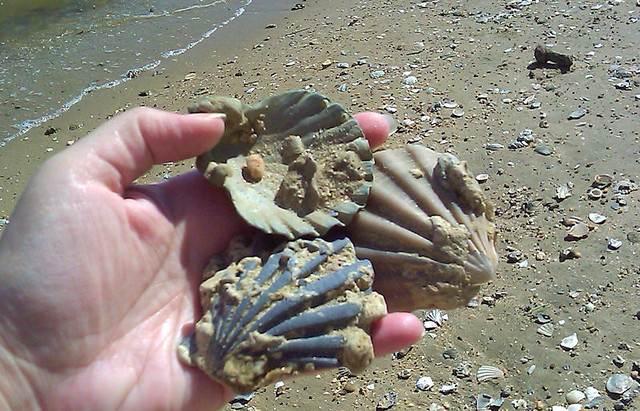
As with all state parks in Virginia, digging with tools to look for fossils is not permitted. If you want to have the best chance of scoring some great finds, try to make it out there around low tide when more of the shoreline is exposed. Even better, plan your trip a day or two after a storm. The increased wave action will have churned up fresh material for you to pick through.
Tip: You can check tides by location here.
The entire shoreline of the James River is a fantastic place to hunt for fossils, but access is restricted in most areas. Chippokes Plantation State Park is your best bet for collecting unless you have permission from another landowner in the area.
You can find more information about the park by visiting their website here. For dates and times of the next available Fossil Walk, check this page.
Westmoreland State Park
Home to the appropriately-named ‘Fossil Beach’, Westmoreland State Park is a must-visit destination for every fossil collector in Virginia. On the southern shore of the Potomac River, this state park boasts some of the best fossil hunting grounds in the state.
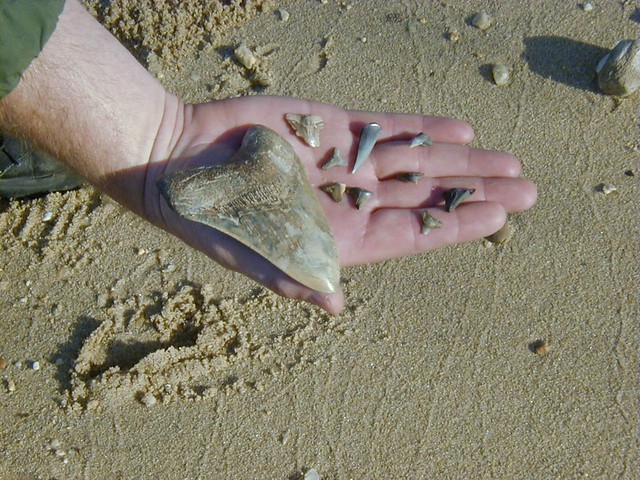
There are quite a few places along the Potomac that are well known for fossil collecting but, since gaining access to those locations can be difficult, Westmoreland State Park is the place to go for anyone who just wants an easy place to get out and do some hunting. The park has many trails and camp grounds so you can even make a weekend of it with the family.
The park is best known for shark teeth and other fossils, but since it’s such a popular destination it can sometimes be slim pickings. Again, for your best chances of finding some good material try to go around low tide in the morning, especially after a good storm.
You can find more information about the park by visiting their website here. For dates and times on the next available Fossil Hikes, check this page.
York River State Park (Fossil Beach)
Situated between Chippokes Plantation and Westmoreland State Parks, York River State Park offers another opportunity for fossil collectors to get out and explore. The York River is not as well known as the Potomac or James river for fossil collecting, but it is no less prolific. Like Westmoreland, York River State Park has a ‘Fossil Beach’ where you can go to hunt for fossils.
Take note that the authorities at York River State Park ask that you only take one fossil home with you. There are plenty of fossils to go around, but they want to make sure that it stays that way- so no hoarding! In situations like this, I like to hold my favorite 3 to 5 finds (replacing and discarding specimens as I find better ones) and then select my favorite when I’m ready to go home.
As with other state parks along the coast, you can find many sizes of shark teeth, shells (including Chesapecten), and many other species of marine life.
You can find more information about the park by visiting their website here.
Colonial Beach
Upriver from Westmoreland State Park is the town of Colonial Beach. There is a long stretch of public beach there that can sometimes be a good place to search for fossils. This area isn’t designated as a fossil hunting spot, but shark teeth and other fossils have been known to wash up in the sands there.
This beach is just one of many spots along the Potomac where you can find fossils. If fossil collecting is your primary goal then would probably recommend that you just head to Westmoreland State Park in the area, but if you just want to walk along the beach and have a shot at finding some shark teeth or whale bones then Colonial Beach is definitely worth a shot.
Stratford Cliffs
This area is a privately owned beach that has had access restricted and then re-instated over the years, so before you go make sure to check the current status. At the time I’m writing this, you can gain access to the beach by purchasing a ticket to tour the grounds, and then afterward you can go down and collect in a specific spot near the water.
Stratford Cliffs is just downriver of Westmoreland State park so you can find much of the same type of material here. People have reportedly found many different types of fossils in this area including shark teeth, whale bones, megalodon teeth, brachiopods, and more.
You can find more information about the estate and the fossil hunting on their website.
Shark Tooth Island
This island is privately owned, but is well-known as one of the premier destinations for shark tooth hunting in Virginia. You’ll need to purchase a permit from the owners before heading out there, and of course you’ll also need access to a boat in order to actually reach the island. The cost of a permit is based on the type of boat you take to the island, so the cost can be fairly reasonable if you split it between a few people and you make several trips.
The island is well-known for its shark teeth, porpoise teeth, whale bones, megalodon teeth, and more. Since public access is restricted you can often find many more specimens here than you would at state parks, so if you’re serious about collecting it could be well worth the time and money to search here.
To request a permit, email [email protected] for more information. No day passes are available, but you can obtain seasonal permits that range from $100 to $255 depending on the type of water craft you plan to take to the island.
Caledon State Park
Caledon State Park is further up river along the Potomac and is less well known for fossil hunting than Westmoreland. Anecdotally, fossils are less bountiful here than in other state parks but you can still find small shark teeth and other fossils along the beach, especially at low tide when more shoreline is exposed.
If you are around this area it might also be worth checking out Purse State Park in Maryland on the other side of the Potomac. Shark teeth there are reportedly more abundant and easy to find.

Like many state parks in Virginia, you can sometimes find guided Fossil Hikes where are park guide will take you around the park to point out and collect some fossils. This can be a great way to learn about the area and the ancient life that used to live in the area.
You can find more information about the park by visiting their website here. For dates and times on the next available Fossil Hikes, check this page.
Types of Fossils Found in Virginia
Virginia boasts some of the best casual fossil hunting United States thanks to the many publicly accessible beaches known for their shark teeth and other fossils. Hundreds of millions of years ago, Virginia was covered in a shallow sea that was teeming with ancient forms of life.
Those creatures left behind their remains at the bottom of the sea, and they were eventually buried and turned into rock in the form of fossils. Today, those rocks are being continuously eroded away by tidal currents and exposing more and more fossils for us to find.
If you’re planning on going fossil hunting or you’ve already found some fossils that you’d like to identify and learn more about, I’d highly recommend picking up a copy of the Field Guide to Fossils. It’s loaded with tons of great pictures and descriptions of the most common fossils you’re likely to find.
Tip: Finding completely intact fossils is a rare and exciting experience. In practice, it is far more common to find incomplete, broken fossils. These are lower in quality but are still very satisfying to find. Have fun and don’t expect to find museum-quality pieces!
Today, there are an incredible number of species of fossils you can find in Virginia. It is more practical and convenient to classify and discuss them in larger classifications of fossils. Here are the most common and popularly collected fossils in Virginia:
Shark Teeth
Shark teeth are some of the most abundant and popular fossils around. They are often collected near present-day beaches, but they can be found almost anywhere that used to be covered by ocean water.
Skeletons and other remains of sharks are less common to find, but do occur. Shark teeth are extremely hard and abundant, so they are more easily preserved and easy to find.
In Virginia, shark fossils are most often found along the tidally influenced rivers emptying into the Chesapeake Bay, but they can also be found in smaller quantities much further inland.
While much more rare than smaller shark teeth, you can sometimes find Megalodon teeth in the same locations.
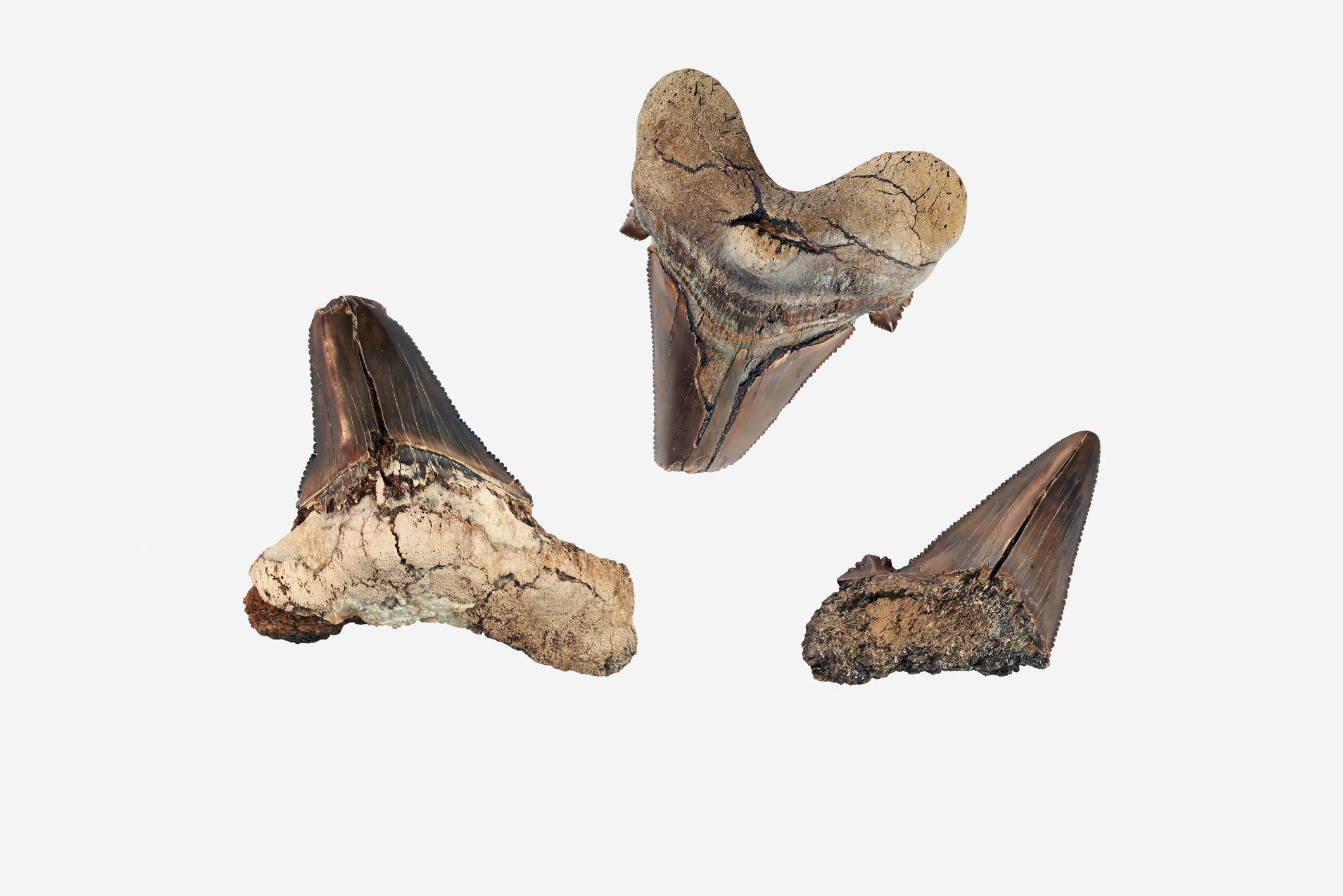
Mollusks
Mollusks are some of the most prevalent and important members of the fossil record. There are countless species preserved from almost every geologic age. Characterized by a hard external shell, the mollusk phylum includes clams, oysters, mussels, and scallops
The most well-known and highly studied mollusk fossil in Virginia is Chesapecten jeffersonius. Along with many other mollusk species, it can be found in sediments all along the coastal plain.

Trilobites
Trilobites are some of the most well-known and popular fossils in the world. They dominated the oceans across many millions of years, leaving fossils in rocks from the Pre-Cambrian through the Permian. Trilobites are characterized by their distinct three-lobed bodies and can vary in length from about 1/10th of an inch to almost 3 feet.
In Virginia, trilobites are most often found in Devonian aged rocks in the central and western parts of the state.
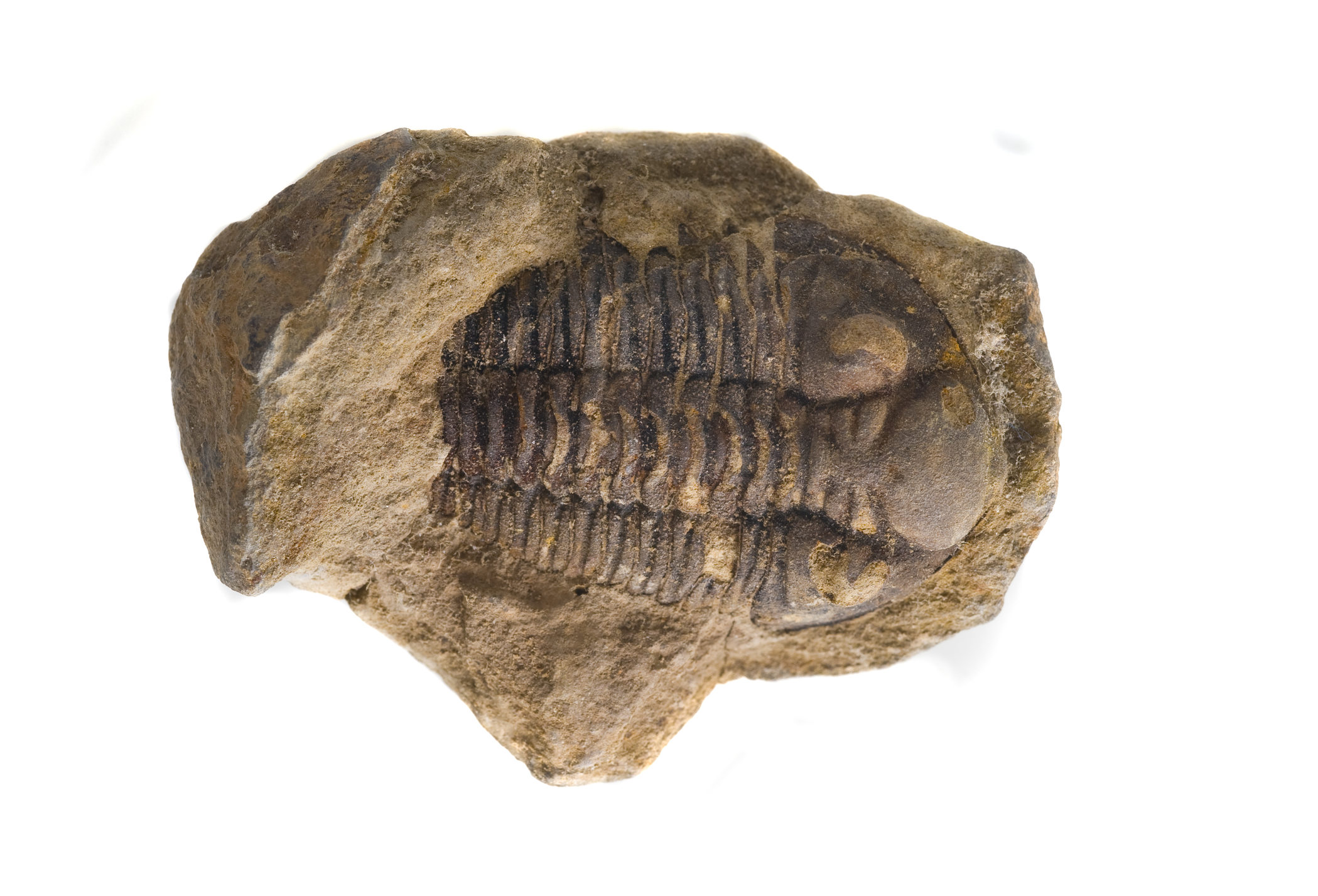
Coral
We all know and love coral as the brightly colored and fantastically-shaped home of many tropical fish, but it is also a large and important part of the fossil record. There are countless species to be found, and they come in a wide variety of shapes and patterns.
In Virginia, the coral fossils yous can be found in Cenozoic and Paleozoic sedimentary rocks all across the state.

Crinoids
Crinoids are some of my personal favorite fossils. These creatures were beautiful when alive, forming delicate flower-like polyps attached to their stems.
Crinoid stems are very easy to find in most fossil beds, but unfortunately, the polyps were made of softer material and are much rarer to find. You can usually find them in large clusters or groups.
In Virginia, crinoid fossils are most often found in Devonian aged rocks in the central and western parts of the state.
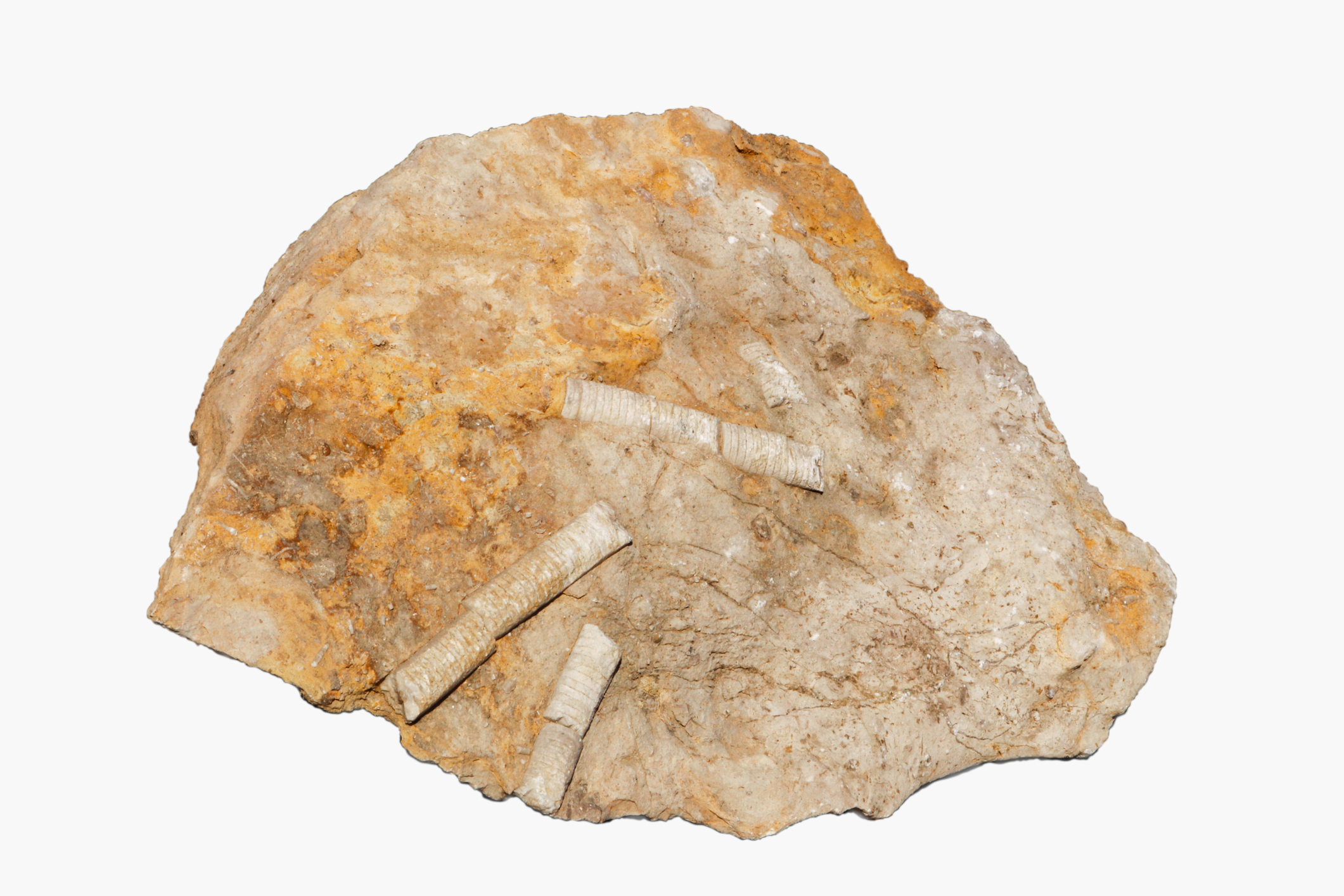
Brachiopods
Brachiopods are some of the most common and easily recognizable fossils you can find, consisting of two shells (one upper and one lower). The shells of many species have a ridged appearance. They lived in the sands at the bottom of shallow seas.
Thousands of species of brachiopods have been identified in the fossil record. They can be almost microscopic or up to several inches in size.
Brachiopods have existed for many millions of years and still endure today, making them a ‘living fossil’. They have been found as far back as the Cambrian.
In Virginia, Brachiopod fossils are most abundant in the Paleozoic aged rocks of the Valley and Ridge Province.
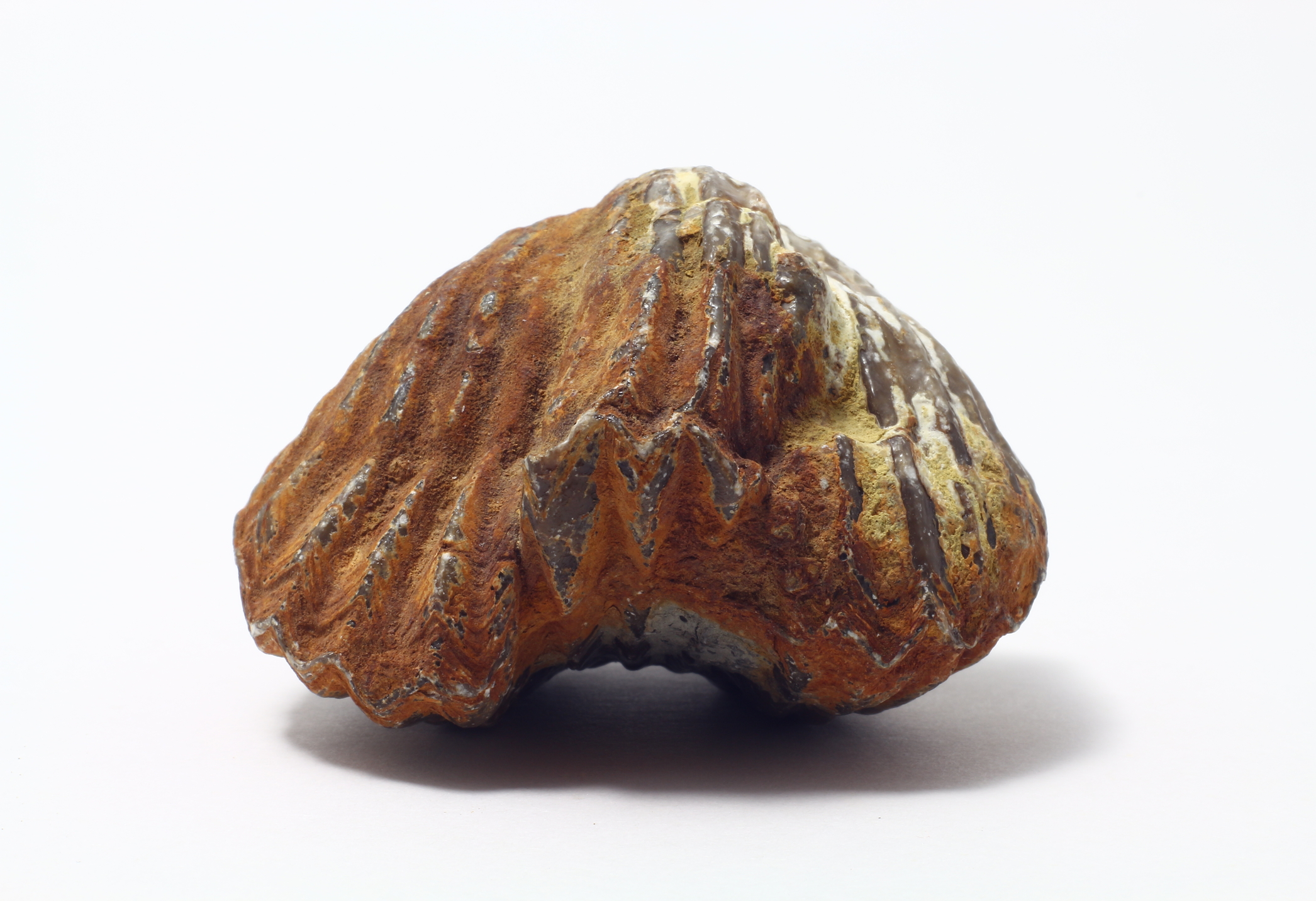
Plant Fossils
When people go fossil hunting they usually set out with the goal of finding shells or bones of extinct animals, without even considering fossilized plants. Plants are an important (and fun!) part of the fossil record, but because they are usually made up of soft material they are not often preserved.
Virginia has a wealth of fossilized plants, mostlyin the form of ferns. They are most commonly found in Paleozoic sediments in central and western Virginia. Not surprisingly, they are often associated with coal beds due to their organic content.
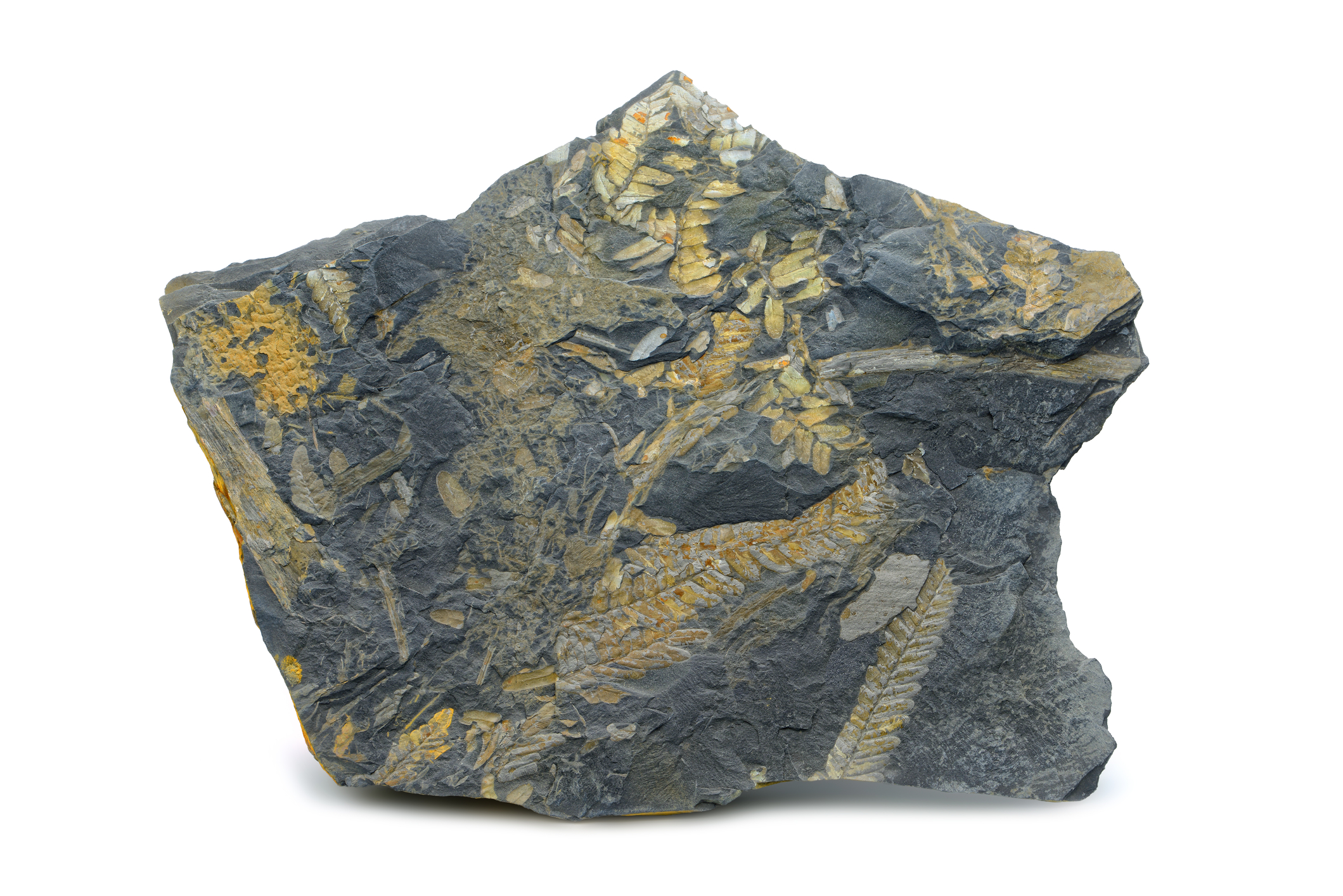
Whale Bones
Whale bones are not usually on people’s radar when they go out fossil hunting, but they are surprisingly prevalent in some areas. These bones can vary greatly in size, but if you find one it is usually a vertebra segment.
In Virginia, whale bones can most often be found in the same locations as shark teeth. As today, sharks and whales lived next to one another in the same time, location, and conditions, so their fossils usually turn up in the same places.
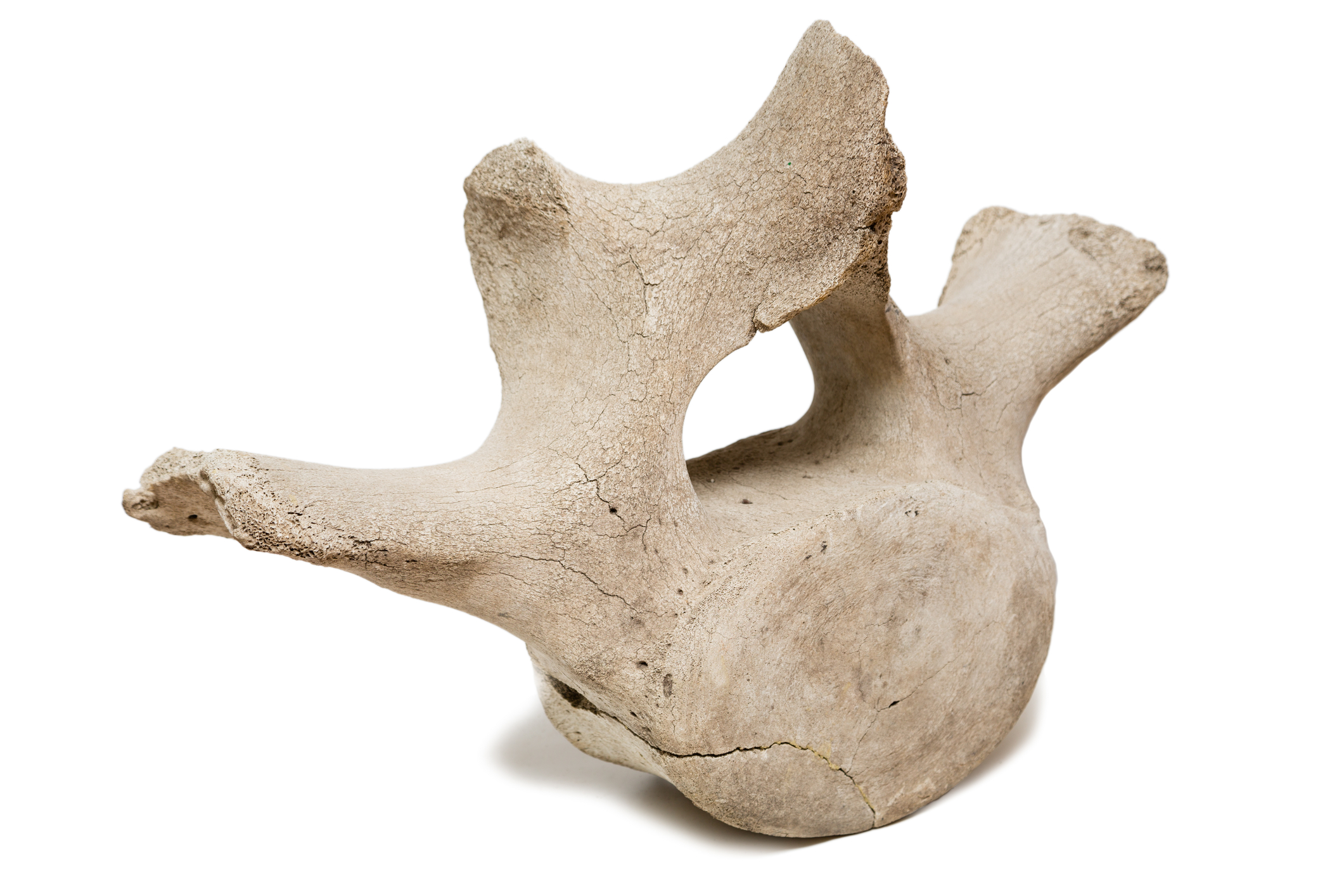
FAQs About Fossil Hunting in Virginia
Do You Need a Permit to Collect Fossils in Virginia
When collecting fossils or rocks, it is imperative that you obtain permission from the landowner before removing anything from a piece of property. In some places in the United States there are even different rules about collecting depending on the type of fossils you’re finding.
You do not need a permit to collect fossils in Virginia, but you do need permission from the landowner where you are collecting. Virginia state parks do not require you to obtain a permit before collecting. Private property lines on beaches extend to the low tide line, so do not trespass on private beaches.
Can I Find Megalodon Teeth in Virginia?
Almost every fossil collector wants to find a nice Megalodon tooth for their collection. If you’re in Virginia then you’re fortunate that there are many locations where you have a very real chance of finding one!
In general, you can find Megalodon teeth in Virginia in Cenozoic aged rocks all along the coastal plain. Most collectors have the most success finding them in tidally influenced river sands, particularly a couple of days after a storm and at low tide.
Can I Find Dinosaur Bones in Virginia?
With Virginia’s reputation as a fossil collecting destination, you might wonder if you can find any dinosaur bones in the area. Unfortunately, this is one area where Virginia fossil collecting falls short.
No dinosaur bones have ever been found in Virginia, and it is unlikely that they ever will be. Some trace fossils like footprints have been found, but nothing more. Because of those trace fossils we know that dinosaurs did indeed roam the area that is now Virginia, but they left no bones behind in the fossil record.
Sources & Further Reading
To learn more about rockhounding and what you can find in Virginia, I’d highly recommend that you check out my Virginia Rockhounding page with more maps and information.
